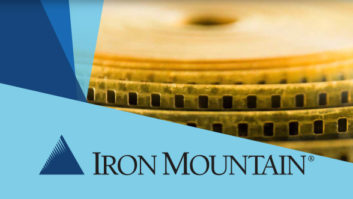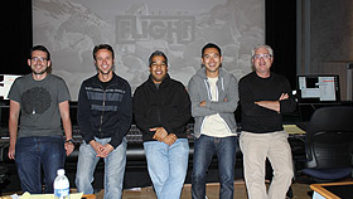NASHVILLE, TN—“If I was going to say one thing, it would be, hello, hard drives!” says Barry Cardinael, project manager for Iron Mountain Entertainment Services in Nashville. Hard drives full of valuable data end up on shelves every day, he says, “But nobody is thinking, is this going to spin-up two years from now, let alone whether they will be able to access the files and manage them.”
That’s a slight exaggeration, of course. Some people are thinking very hard about the longevity of the storage medium, including Cardinael. And during July, in Nashville, he participated in events hosted by the Recording Academy Producers & Engineers Wing at Jack White’s Third Man Records, and on a TEC Tracks session during the Summer NAMM Show on this very subject.
Cardinael is passionate about educating the music-making community on the importance of media assets, not just in terms of the current and future financial value of those assets, but also an individual’s personal legacy. “It’s important to keep, preserve and manage what you’ve got, and be damned careful with it,” he stresses.
Like many in the pro-audio industry, Cardinael is a lifelong musician and songwriter. Immediately after college, he was teaching music when he spotted an opportunity: piano tuning. “I went to a technical trade school the following year, became a certified piano tuner, and not long thereafter, hooked up with a company that was going to rent grand pianos to rock and roll groups on the road,” he says.
Two weeks later, he was looking after Chicago’s nine-foot grand piano. He spent the ensuing years touring with Joe Walsh’s Barnstorm, Earth, Wind & Fire, Cat Stevens, Barry Manilow, the Beach Boys and the Gap Band. A full-time gig with Neil Diamond, from 1979 through 1996, led Cardinael to Iron Mountain, where he helped plant the seed that would grow into the company’s Entertainment Services division.
Iron Mountain had acquired a facility in Hollywood where a large quantity of film, video and audio assets was being stored. After Cardinael spent a couple of days searching for one of Diamond’s tapes that had been mislaid by the previous building owner, he approached Iron Mountain to discuss setting up a division dedicated to preserving and protecting media and entertainment assets. He was brought on as a consultant when the company set up the division, and in 2000 was hired to relocate and oversee a new Nashville operation.
The operation later moved to a purpose-built, three-acre campus in Antioch, TN. Iron Mountain maintain 11 facilities worldwide, where it currently preserves nearly 31 million individual media elements for 1,600 customers, digitizing over one million assets and storing more than 50 petabytes of data.
Cardinael also signed up for the Recording Academy P&E Wing’s Delivery Specifications Committee in 2001, helping to establish recommendations for the delivery of recorded music projects. Those recommendations were subsequently adopted and further developed by the AES.
But the recommendations were only the first step, says Cardinael, who has recently been appointed chair of the Nashville AES Section. No less important was educating the record business.
“We said, wouldn’t it be wonderful if we could convince the labels, when they’re putting a project together, to be smart on the back end. Put an extra four or five thousand dollars into the budget on the front end, so when the producer delivers unnamed drives and disks and tapes, they’re properly taken care of,” he advises.
“Pull all the data off the drives; pull everything in from the producer and any rented or home studio drives. Make sure you assemble every key component or ancillary reusable component of the content. Put together a metadata database so you know what is where. Make sure it’s all checksummed and put onto multiple LTOs with physical separation.”
Follow those procedures, says Cardinael, “And now you’re in a place where you can preserve and manage your digital files. You can go from LTO-6 to-7 to-8, and you can begin to assure you’re on a protocol and a workflow that will let you re-access and reuse your content 10, 20 years later.”
Uniformity is key, going forward. One Iron Mountain client purchased the entire catalog of 6,000-plus recordings by a major artist. Over the decades, the band has recorded to every conceivable analog and digital recording and file format, he says. “Our goal was to advise the client what they should put all of this data on and what file format it should all be converted to, so they have one flavor. It’s important for repurposing, release and revenue, to the financial status of a publisher or label.”
But it’s not solely about money. Some artists rely on Iron Mountain to archive and preserve items such as wardrobe, original photographs, contracts or handwritten lyrics. “It’s about preserving those things that are special about us as human beings, our culture, as individuals and artists. That’s the passion part of it,” he says.
Iron Mountain Entertainment Services
www.ironmountain.com/Services/Entertainment-Services.aspx





